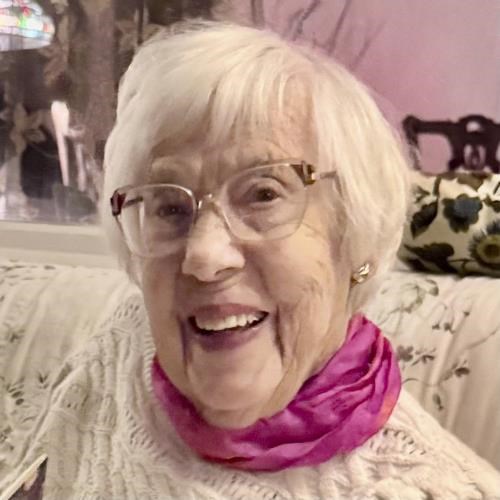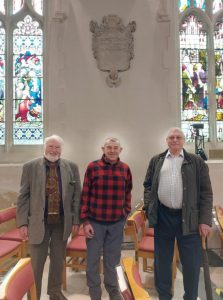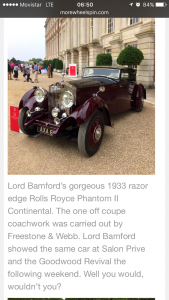The Family of Alexander Rowland of Macassar Oil fame
My research on the family of Alexander Rowland comes up with certain different conclusions from those published in the ‘Oxford Dictionary of National Biography’ by T.A.B. Corley, parts of which I have used as a base document.
With the assistance of ‘British History online’ we learn that the original ‘Thatched House Tavern’ in St. James Street, Westminster was demolished in 1814. Prior to this, “Beneath its front” says Mr John Timbs, “was a range of low-built shops, including that of Rowland, the fashionable coiffeur of Macassar fame”. During his time at the ‘Thatched House Tavern’ it is recorded that Rowland charged what was then the exorbitant sum of 5s. for a haircut.
It seems likely therefore that Alexander Rowland’s birth and baptism took place in St. James, Westminster. I have traced that William and Jane Rowland had two sons named Alexander recorded, firstly born on July 5th 1747 and baptised on July 23rd 1747, and secondly born on September 10th 1749 and baptised on September 17th 1749. Although I have not found a burial, I would assume the first son died very young. A further son, Goodfellow Rowland was born on March 26th 1751 and baptised at St. James, Westminster on April 9th 1751.
Thatched House Tavern
A number of publications, I believe based upon the views of Captain Gronow (1794-1865), tell us that Rowland or Rouland was a French émigré, with a coiffeur shop next to the Thatched House Tavern, who came to London with the Bourbons on the break out of the French Revolution and followed them back to France in 1814, the same year it is reported the Thatched House Tavern was demolished. It is also said that when Rowland died he left a daughter, Madame Colombin, the well known pastry cook in Rue de Luxembourg. I suppose it is possible Alexander Rowland’s father returned to France when the Thatched House Tavern was demolished, but we know, without question, that Alexander Rowland remained in England with his business centred in Hatton Garden, Holborn.
It appears that William and Jane Rowland moved their family to Gray’s Inn Lane as a further five sons were baptised from 1757 to 1765 at St. Andrew, Holborn with this address as the family abode. We know that when Alexander Rowland completed his indentures to Mary Withybed of Snow Hill, Holborn on August 7th 1770 his address when Admitted to the Worshipful Company of Barbers was Gray’s Inn Lane.
I believe that Alexander Rowland married Ann Hart at St. Anne & St. Agnes in the City of London, shortly after completing his apprenticeship, on October 17th 1770.
Extracted from the St. Anne & Agnes, City of London parish registers
It is worthy to note that Alexander Rowland was capable of signing the register, although his wife could not. Alexander and Ann had two children baptised at St. Andrew, Holborn with the family address recorded as Gray’s Inn Lane, the eldest being a William Rowland in 1772. The family moved from Gray’s Inn Lane to Saffron Hill as the Fire Insurance Policy Register lists Alexander Rowland, Peruke Maker at Great Saffron Hill in 1778 and 1779, also the burial of Ann Rowland, believed to be Alexander’s first wife, was recorded at St. Andrew, Holborn on March 8th 1782 when her address was recorded as Saffron Hill.
Alexander Rowland, a widower of St. Andrew, Holborn married secondly, Mary Marcey at St. George, Bloomsbury on January 21st 1783.
Extracted from the St. George, Bloomsbury parish registers
Alexander and Mary Rowland had at least seven children with the first baptised at St. Andrew, Holborn on June 18th 1783 and named Alexander, with the family address again recorded as Saffron Hill. The family address for the remaining children from September 1785 until May 1793 was shown as Kirby Street. It must be assumed Alexander’s wife Mary died in childbirth or quite soon after as Alexander Rowland married Mary Waters on February 21st 1797, when they were both described as widowers
Extracted from the St. Andrew, Holborn parish registers
Alexander Rowland of 1 Kirby Street was listed for Insurance between April 25th 1811 to April 11th 1816. The death of Mary Rowland of Kirby Street was possibly the burial recorded on December 3rd 1805 at St. Andrew, Holborn. On August 24th 1820 at St. Botolph, Bishopsgate, Alexander Rowland married Sarah Slade, the widow of John Slade. Sarah was the sister of the wife of Alexander Rowland junior’s wife, Elizabeth who was one of the witnesses to the marriage. Sarah and Elizabeth were also the sisters of William Morriss of Lee, Kent, farmer who was named as one of the two executors of the will of Alexander Rowland in 1823.
Extracted from the St. Botolph, Bishopsgate parish registers
By the time of Alexander’s death on December 16th 1823, aged 75 he and his wife Sarah were living at Exchequer Place, Lewisham Village, now Lewisham High Street.
Exchequer Place, Lewisham
[Taken from the internet]
Alexander Rowland senior was buried in a family vault described as under the Vestry of St. Mary, Lewisham. His will was proved on February 3rd 1824, reference PROB11/1682. The main beneficiaries of his will were his wife, Sarah, his son, Alexander, a further son Rowland and two married daughters, Mary Smith and Elizabeth Collier. His son, Alexander had joined the firm at an early stage and carried on his father’s Rowland’s Macassar Oil business.
As stated earlier, Alexander Rowland junior was baptised at St. Andrew, Holborn on June 18th 1783. He was Admitted to the Freedom of the Barbers’ Company on March 1st 1808 by patrimony ‘by virtue of his father’s copy and on the Testimony of Jacob Bonick, citizen and Barber’. On April 2nd 1816 Rowland paid his Livery Fine of £15 and was clothed in Court. Alexander Rowland had been a student of Joshua Brookes, Lecturer on Anatomy at Blenheim Street, Great Marlborough Street. He had his business in Kirby Street, off Hatton Garden in the same street as the family had lived since 1785. According to the ‘Oxford Dictionary of National Biography’ “it was then not uncommon for a well-connected barber to start making his own hair preparations, and about 1793 Rowland senior offered for sale Rowland’s Macassar Oil, an ‘elegant, fragrant and pellucid oil’ of vegetable composition. His son later stated that a relative living on the island of Celebes in the Dutch East Indies had helped by procuring the basic ingredient, which was extracted from the seeds of various species of trees near Macassar. Within two decades the oil had become hugely popular. In the first canto of Don Juan (1812), George Gordon, sixth Baron Byron, worked in a topical gag about the ‘incomparable oil’, Macassar!’ Two years later the tsar of Russia was reputed to have asked for 10 guineas’ worth to be sent without delay via the Foreign Office. Rowland was by then diversifying, for example into the skin preparation Kalydor, made with oriental ‘exotics’, Odonto, a white, fragrant tooth powder, and Alsana extract to relieve toothache, flatulence, and spasms.”
In 1818 Alexander Rowland junior published the third edition of his book ‘An Historical, Philosophical and Practical Essay on the Human Hair’. Perhaps not surprisingly, he advocated the use of his macassar hair oil. Returning again to the ‘Oxford Dictionary of National Biography’, it tells us the son was “more publicity conscious than his father, he recognized that in the era of the dandy, his firm had to strive to bring perfection to gentlemen’s faces and hair. However, for all its pellucidity, the oil stained the backs of padded chairs, thus leading to the widespread introduction of ‘antimacassars’ to protect the upholstery”. ‘Lewisham and Deptford, a Second Selection in Old Photographs’ by John Coulter, gives us a further insight to Alexander Rowland junior and his fairly substantial house called Rosenthal in Rushey Green, Lewisham. “ The villa, built in the late 1790’s, was noted chiefly as the home from c. 1830 to 1861 of the flamboyant Alexander Rowland. He was the manufacturer of Macassar Oil, the nineteenth century Brylcreem, and thus the father of that quintessentially Victorian object, the antimacassar. He once scandalized the congregation at St Mary’s church, Lewisham by attending service as a walking advertisement for his latest product, with one of his whiskers its native grey and the other dyed a brilliant black.” Rosenthal was demolished about 1888, a church and a number of adjoining houses were built on the site and a Rosenthal Road was formed which still exists to this day.
Before 1808 Alexander Rowland junior married Elizabeth Morriss, who as stated previously was the sister of the widow Sarah Slade, who was his father’s fourth wife. The 1841 census for Rosenthal, Rushey Green, Lewisham shows Alexander Rowland junior, his wife and his father’s widow in occupation along with three daughters. Alexander and Elizabeth Rowland had at least eight children, the eldest of whom Alexander William Rowland was baptised at St. Andrew, Holborn on June 5th 1808. The family abode was again recorded as Kirby Street. Only the youngest two children were baptised at St. Mary, Lewisham from 1819, which must have been when the family moved its home away from the family business of A. Rowland & Sons in Hatton Garden.
On May 6th 1845 at a meeting of the Court of Assistants of the Barbers’ Company Mr Rowland junior attended and paid his fee on admission of £52 and was sworn and took his seat in Court, his election to the Court having been approved on April 1st. He was a regular attendee at Court. He served as Third Warden in 1848, Second in 1849, First in 1850 and was Master in 1851.
Alexander Rowland junior was again listed living at Rosenthal, Rushey Green at the time of the 1851 census and was described as a Perfumer, employing 5 men and 2 boys. His wife Elizabeth had died, but his step mother Sarah was still living with him as well as three of his unmarried daughters. In 1853 Rowland published another work ‘The Human Hair’, popularly and physiologically considered, this was illustrated by coloured plates and in the appendix was reprinted an article by Charles Dickens from ‘Household Words’, on the subject of beards.
By the 1861 census Alexander Rowland was living at 19 Brunswick Terrace, Hove, Brighton, Sussex along with his son, Alexander William Rowland and his family. However a few months later, Alexander Rowland died on July 13th 1861 at Rosenthal, Lewisham and like his father was buried in St. Mary, Lewisham, along with a number of other family members.
Following his father’s death, Alexander William Rowland ran the family business, with the assistance of his brother, John Henry Rowland who was baptised at St. Andrew, Holborn on January 14th 1810, while the family were living at Kirby Street.
Obtained from Lewisham – A History in Pictures
The following is a typical advertisement, believed to be about 1875, for the family business and some of the products apart from Rowland’s Macassar Oil.
Alexander William Rowland had a number of children by his wife, Henrietta Ditges of Cologne who died on May 20th 1851, aged 32. One of his daughters was later known as Dame Henrietta Octavia Weston Barnett who was perhaps best known for the development of Hampstead Garden suburb, but along with her husband Samuel Barnett was an important social reformer. Their most notable innovation was the university settlement. A further daughter, Alice Marian Rowland became the second wife of Ernest Abraham Hart, a medical journalist of some note who has an entry in the ‘Oxford Dictionary of National Biography’. Following the death of Alexander William Rowland in June 1869 the Alexander Rowland and Sons business was operated as a partnership between John Henry Rowland (brother of Alexander William Rowland), Henry Edward Rowland (son of Alexander William Rowland) and John Alexander Rowland (son of John Henry Rowland) trading as Merchant Perfumers and Oil Manufacturers at No. 20 and No. 67 Hatton Garden. On June 14th 1870 notice was given of the retirement of John Alexander Rowland and George William Rowland (his younger brother) became a partner. John Henry Rowland then died on February 2nd 1871. This left the business being run by Henry Edward Rowland and George William Rowland. I understand George William Rowland became sole proprietor by acquiring his cousin’s interest. George William Rowland died on April 13th 1925 leaving a widow who outlived him four years, and a daughter Hilda May Rowland who did not marry and whose death was registered during the March quarter of 1946, aged 70. According to the Oxford Dictionary of National Biography, “in 1942 the Alexander Rowland & Sons Ltd. business which was acquired by Philip Ernest Hill and became a subsidiary of Beechams Pills Ltd.” I understand it was Hilda May Rowland who sold what remained of the business, as fashions had changed.
M I Ray



